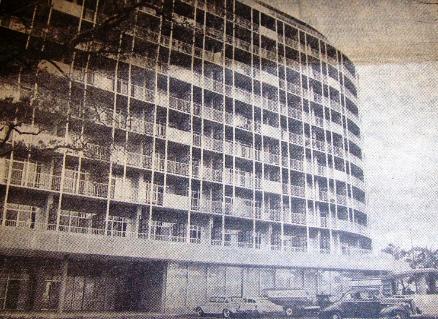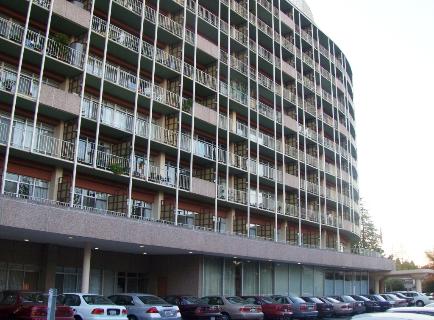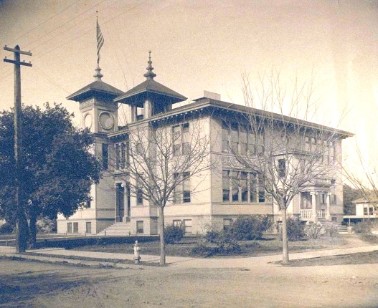Channing House: Retiring in the Community
It is said that in the new world order of globalization, Internet access and satellite television, there are a dwindling number of cultural differences between East and West. Perhaps, but one aspect of Western culture still completely foreign to the rest of the world has to be the retirement community. Such facilities have utterly changed the way millions of Americans spend the final years of their life. And with the way American influences seem to be proliferating abroad, it is possible --- however unlikely it might seem at first --- that retirement homes could become a part of the culture in other lands. After all, who ever thought there’d be a McDonalds on nearly every corner in Beijing.
The three generational household in America has become increasingly rare. There was a time in America when it was typical for a grandparent to reside with their grown children once the first grandchild was born. This is still the case in many other countries --- especially in the Third World and Eastern countries. For instance, in Mexico some 93 % of all elderly are still integrated with their families while in China, India and Japan it is considered shameful to “send a parent away.”
In the United States, however, retirement homes have been around for decades, really taking off in the 1980s. A number of factors have contributed to the trend. Geography is a big one. Americans are spread out all over the country’s four time zones and seniors often live hundreds or even thousands of miles from grown-up children who may have long ago left for college and settled elsewhere. Additionally, most retirement communities offer the medical care and 24-hour assistance that working families cannot provide. In the modern dual-income American family, it is rare that there is anyone with the time to care for a senior with constant medical needs.
In Palo Alto, Channing House was a forerunner in the trend. Built in 1962-63 on the site of the old high school, the massive 10 story modernist structure still thrives as a home to more than 250 seniors. The original thrust for the project came from Dr. Russel V. Lee, Medical Director of the Palo Alto Medical Clinic in the early 1960s. Lee wished to create a non-profit that would work with the Clinic to provide a
place “where older residents could continue to participate in the affairs of our city.” In a 1961 promotional brochure, Channing House stated its mission to “follow and enhance the new trend toward community living among elder citizens. Channing House’s conception takes into account the desire for independence and privacy, relief from the detailed demands of home-owning, assurance of medical care within one’s resources, and for a gracious social life among persons of kind.”
The concept was popular immediately. By the December 1961 groundbreaking ceremony, two-thirds of the then 320 residences were already reserved. And after battling construction worker strikes and a controversy about its city tax status, the $7.5 million Channing House was ready to open. On January 27th, 1964, 270 seniors moved into their new residences, 40% of them hailing from outside the Bay Area.
Today, despite the age of the building, Channing House still has a vibrant, almost dormitory-like feel. A temporary interior wall down a main corridor has become a happy message board for aging residents and visitors. “Graffiti is not just for young people,” “I love my grandma,” and other messages and drawings are scrawled on the wall. And elevator and hallway walls indicate the bustling activity at Channing House, with postings everywhere for this class or that activity. Some invite residents to more traditional senior activities such as bingo games, dominoes, or ice cream socials. But other activities feel more like a catalogue of college classes --- creative writing, art appreciation, current events discussion, internet classes, mystery
readers club.
The social life is not so unlike a university either. During any dinner hour at Channing House, the elevators are full of retirees stopping to fetch friends on their way to the dining hall. And with opportunities to do aqua aerobics, line dancing or Tai Chi, many of these retirees probably participate in a wider variety of activities now than during their working 20s and 30s.
But Channing House offers more than just a collection of community center classes. Unlike seniors who rely on their children, these residents have the freedom and independence of living their own lives on their own terms --- never having to feel like a burden. The non-profit Channing House also provides security. Seniors enter into a long-term lease when they first arrive. It’s not cheap --- a spacious one bed, one bath unit costs more than $400,000 plus a monthly fee of over three grand. Still, many seniors can afford the steep prices from the sale of their homes and a buy-in at Channing House brings the financial peace of mind of knowing that they will receive lifetime medical care.
Still there can be drawbacks to life here. While the Channing House staff and philosophy is more than welcoming to visiting family members, the residence has an inevitably cloistered feel. Upon visiting Channing House, I saw a few dressed-up grandchildren, distracted by handheld Gameboys, sitting in the lobby with their grandma. Interactions were clearly difficult as there was little in that sterile setting to bring the generations together. When Grandma is no longer integrated into the home, familial bonds do not form as naturally.
Another hard side of senior community living is that residents see their own future fate in those whose health fails before them. Asked about the hardest part of living at Channing House, one 23-year resident responded immediately, “It’s seeing your friends fall apart.” This is an unavoidable, but no doubt, heart-breaking reality of retirement community life.
Clearly Channing House life is not for everyone. For some families and cultures, it may never be easy to get used to the idea. But as one resident told me, “The outside world moves too fast, but I never feel old here.” And if Channing House gives seniors a chance for a retirement full of good friends and engaging activities in a secure environment --- well, it’s pretty hard to argue with that. []
Our Reader's Memories:
Be the First!
Send Us Your Memory!

Channing House soon after opening.

From the same angle in 2007.

Channging House was built on the former site of the Palo Alto High School. (PAHA)